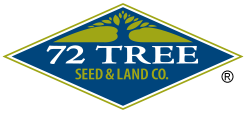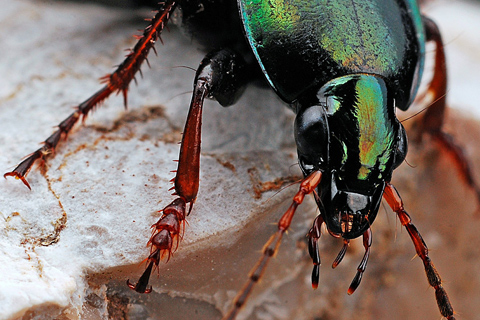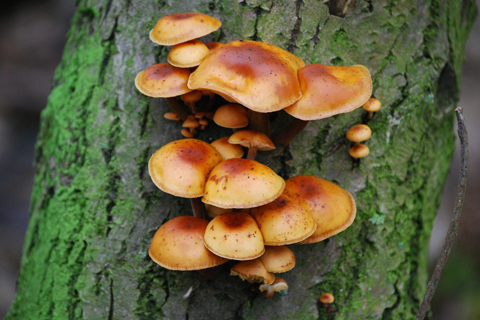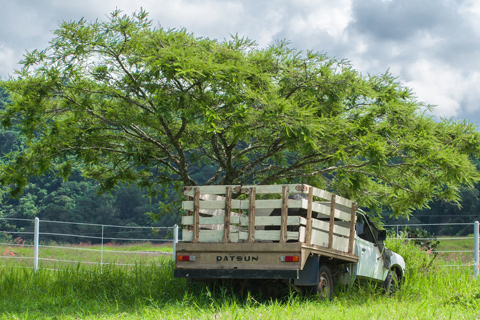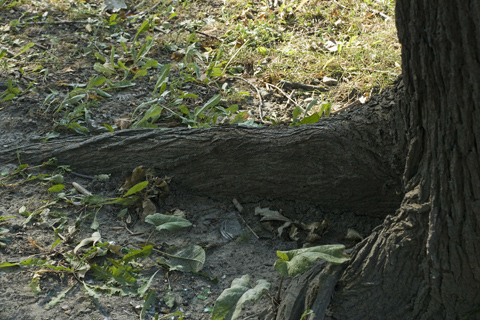Notice: Undefined variable: page in /home/vrxdg1855sn3/public_html/wp-content/themes/72tree/content.php on line 15
Notice: Trying to get property 'ID' of non-object in /home/vrxdg1855sn3/public_html/wp-content/themes/72tree/content.php on line 15
Understanding and Treating Damaged Tree Roots
Trees adorn our beautiful landscapes but also provide humans with needed oxygen. But did you know that the health of a tree greatly depends on the well-being of its roots? Tree roots not only anchor the tree to the earth, but they also absorb the nutrients and water that the tree needs to flourish. Just like physicians diagnose our health by looking for symptoms, we can identify the state of tree health by observing the signs of root damage.
Just as a doctor treats illnesses with the right diagnosis and treatment, so can we nurse back our trees to health. This blog will guide you in understanding the signs of damaged tree roots, the causes, and how to treat them effectively. It will also help you learn how to strengthen the root system of your trees and when to consider tree removal.
Short Summary
• Identify signs of root damage to effectively care for trees.
• Causes of tree root damage include construction activities, pest and disease infestations, and soil compaction.
• Watering, soil aeration, and strengthening the root system promote healthy growth and help combat damaged tree roots.
• Professional arborists can advise on caring for damaged roots and assessing tree stability.
Identifying Damaged Tree Roots
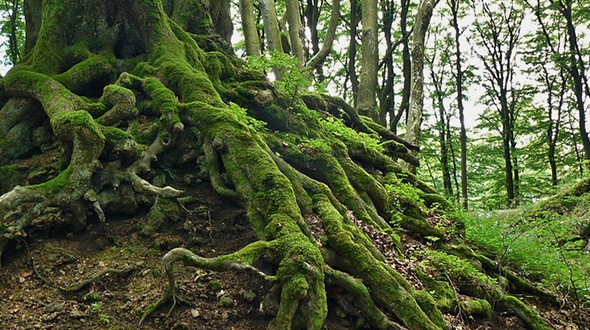
Imagine walking through a park and noticing a tree with yellowing leaves or a tree with visible surface roots; these are not just anomalies of nature but red flags signaling a distressed tree. These signs, including wilting, stunted growth, and soil compaction, are the tree’s SOS calls for help. Identifying these symptoms early is crucial to protecting tree roots and maintaining the tree’s overall health.
The roots are the tree’s lifeline. They supply nutrition and water, store food, synthesize hormones, and provide structural support. So, if the roots are damaged, it can adversely affect the tree’s overall health and stability. It’s like a ship without an anchor, adrift and vulnerable. Therefore, it’s essential to understand and identify the signs of root damage for effective tree care.
Signs of Root Damage
Root damage can be subtle at first glance. It’s like a thief in the night, quietly disrupting the tree-system functions. The first signs of root damage often show up in the tree’s canopy. Wilting, yellowing, stunted growth, or even visible surface roots are all potential indications of root damage. It’s like a tree’s cry for help, signaling that all is not well beneath the surface.
Diseases such as root rot can also indicate root damage. Root rot is a fungal infection that infiltrates roots and gradually spreads throughout the root system until mushrooms and conks emerge along the roots and around the base of a tree affected by the disease. Think of it as a cold that has escalated into pneumonia, affecting the tree’s overall health.
Other symptoms, such as crown dieback, branch dieback, and leaf scorch, can also indicate root damage.
Surface Roots and Soil Compaction
Have you ever seen the roots of a tree creeping out on the soil surface? These surface roots are a common occurrence as trees age. It’s like seeing the veins on an older person’s hand, a sign of aging. However, the appearance of surface roots could also signal soil compaction, a condition that can lead to root damage. By addressing the issue of soil compaction and nurturing the existing roots, you can help prevent further damage to the tree.
Soil compaction is the equivalent of a traffic jam in the soil, with soil particles pressed together, resulting in a denser structure that restricts the flow of water, air, and nutrients to tree roots. This can impede root growth and cause physical damage, just as a traffic jam could lead to car accidents and delays.
Causes of Tree Root Damage
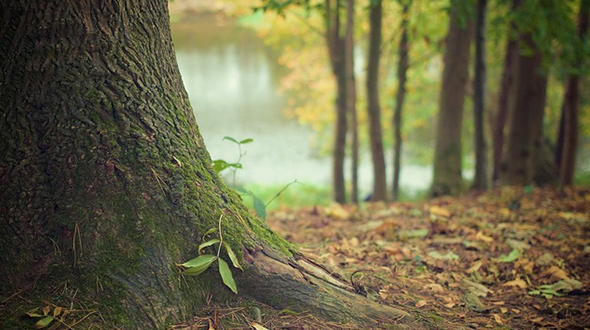
Now that we know the signs of root damage let’s delve into the usual suspects causing it. The most prevalent causes of tree root damage include construction-induced damage, pest and disease infestations, and soil compaction. It’s like a crime scene investigation, where understanding the cause can lead to effective prevention and treatment.
Imagine building a house on a plot filled with trees. Construction activities like excavation, grading, and paving can cause significant damage to the roots. It’s like trying to build a house in a crowded city without disturbing the people.
Similarly, pest and disease infestations are like uninvited guests that harm the roots and compromise the tree’s health. Finally, soil compaction, as mentioned before, is like a roadblock preventing the smooth flow of nutrients to the roots.
Construction-Related Damage
Trees and construction sites often don’t mix well. The hustle and bustle of construction activities like excavation, grading, and trenching can cause significant physical injuries to the tree roots, branches, and trunks. Think of it as trying to perform a ballet in the middle of a boxing ring; the delicate roots don’t stand a chance against the heavy machinery.
Heavy machinery and foot traffic can lead to soil compaction, which reduces the soil’s permeability, affecting the roots’ access to oxygen and water. In addition, construction activities can result in severed roots, which can cause instability in the tree and decrease its overall health. It’s like a tree trying to survive with its lifelines cut off, struggling to stand tall.
Pest and Disease Issues
Pests and diseases are the silent enemies of trees. From root rot to fungal infections, these culprits can infiltrate the roots and wreak havoc. It’s like a silent invasion that weakens the tree from within. Infected trees may show signs of discolored leaves, wilting, and stunted growth, signaling a desperate need for help.
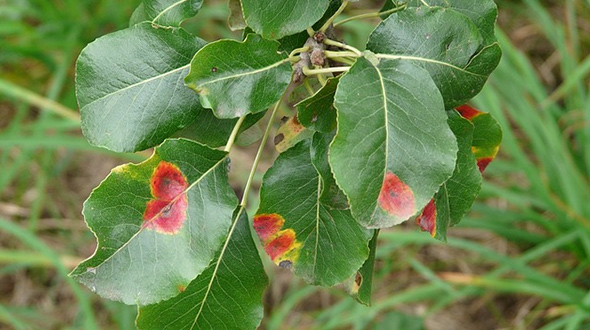
Just as a doctor prescribes medicine to treat an illness, these tree ailments also need specific treatments. Depending on the type of pest or disease, treatments may range from chemical solutions to removing the affected roots or improving soil drainage. Additionally, preventative measures such as proper watering, mulching, and avoiding over-fertilization can help safeguard the roots from pests and tree diseases. The best defense is often a strong offense, after all.
Caring for Trees with Damaged Roots
Treating a tree with damaged roots is akin to nursing a sick patient back to health. It requires a combination of proper watering techniques, soil aeration, and nutrient management to protect tree roots. Each of these strategies is like a piece in a puzzle that, when put together, can help restore the tree’s health.
Just as a patient needs medication and rest to recover, trees with damaged roots need adequate watering to absorb essential nutrients from the soil and recover. The soil around the tree’s roots serves as a lifeline, supplying it with the required nutrients and keeping trees healthy. It’s like a hospital bed for a patient, providing a safe and conducive environment for recovery.
Watering Techniques

Water is the elixir of life for trees. Proper watering can help trees with damaged roots recover by facilitating the absorption of nutrients from the soil. However, overwatering can lead to root rot and increase the risk of the tree falling due to the decreased anchoring of roots in saturated soil. It’s like overfeeding a patient; while the intention is to nourish, it could end up causing more harm than good.
Determining whether a tree needs watering can be a bit tricky. One method is to use a screwdriver to test the soil’s dryness. If the screwdriver comes out dry, then the tree likely requires watering. It’s like checking a patient’s temperature, a simple yet effective way to gauge the tree’s hydration needs.
Soil Aeration and Nutrient Management
Healthy soil is the foundation of healthy trees. Soil aeration and nutrient management are vital in improving the health of damaged roots. A well-aerated soil enables better access to water, air, and nutrients for the tree roots, thereby promoting their health. It’s like ensuring a patient has clean and fresh air to breathe and nutritious food to eat.
Techniques like root pruning can help minimize root disturbances and contain diseases, thus avoiding their spread to other parts of the tree. It’s like a surgical procedure, removing the affected parts to save the whole.
Moreover, using tools that use compressed air to loosen soil can significantly improve soil aeration. It’s like a breath of fresh air for the roots, helping them to breathe and absorb nutrients effectively.
Strengthening Your Tree’s Root System
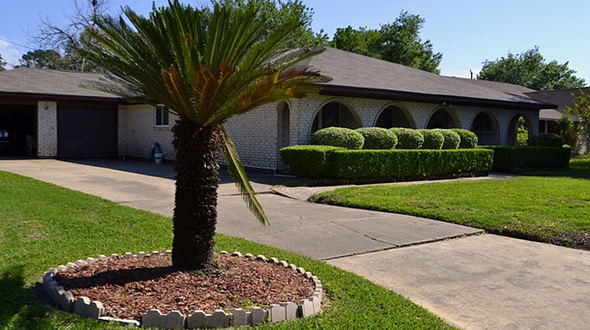
Just as a weak foundation can compromise a building’s stability, a weak root system can affect a tree’s health and stability. Strengthening a tree’s root system encourages root growth and supports the tree trunk and canopy. These strategies are like the building blocks, ensuring the tree stands tall and healthy.
Incorporating organic matter like compost, bark, or mulch into the soil can improve drainage and aeration, encouraging root growth. It’s like feeding the soil superfood, boosting its health and fertility.
On the other hand, supporting the tree trunk and ensuring a stable tree canopy can help stabilize the tree, especially when the roots are damaged. It’s like providing props to a leaning building, preventing it from falling.
Encouraging Root Growth
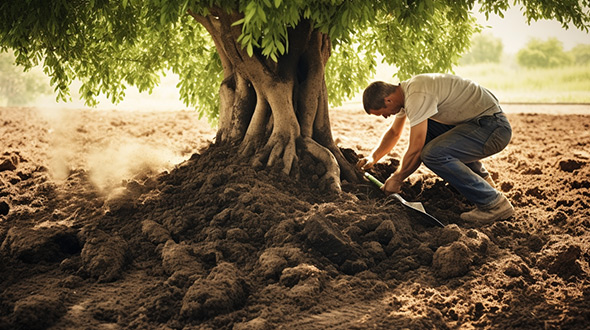
Promoting root growth is like boosting the immune system of a tree. It involves providing the plants with the necessary nutrients, water, soil aeration, light, temperature range, and introducing phosphorus and potassium to the environment. Each of these factors is like a vital vitamin, playing a crucial role in the tree’s health.
Using rooting powder on cuttings before planting them can also stimulate root growth. It’s like a growth hormone, giving the roots a head start. Providing adequate nutrients, water, aeration, and light can boost root development, giving the tree a strong foundation. It’s like providing a child with a balanced diet and good education, setting them up for a healthy and successful life.
Supporting Tree Trunks and Canopies
Just as a building needs strong pillars to stand tall, a tree needs a strong trunk and a healthy tree canopy to flourish. Providing support to tree trunks and canopy can help stabilize trees with damaged roots. Techniques such as staking, cabling, bracing, guying, and propping can offer this much-needed stability.
Each of these techniques serves a specific purpose. For example, staking can provide supplemental support for young or damaged trees. It’s like a crutch, helping the tree stand tall until it can support itself. On the other hand, cabling and bracing provide additional support to tree trunks and canopies, much like the beams and columns in a building.
When to Consider Tree Removal
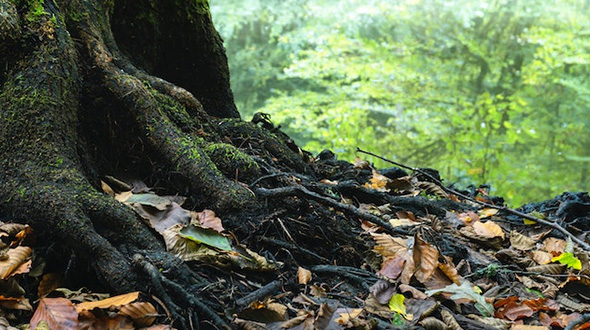
Just as a doctor may sometimes need to make the difficult decision to amputate a limb to save a patient’s life, there may come a time when tree removal becomes necessary for the greater good of the environment. Tree removal should be contemplated when the tree is deceased, deteriorating, afflicted, or presents a safety risk. It’s a hard choice, but sometimes the only choice.
The decision to remove a tree should not be taken lightly. It’s a delicate operation requiring thorough assessment and professional advice, like a surgical procedure. For instance, removal should be considered if at least 50% of the tree is damaged. It’s like a building with a severely damaged foundation; it’s a disaster waiting to happen and needs to be dealt with promptly.
Assessing Tree Stability
Before deciding to remove a tree, assessing its stability is crucial. This involves evaluating the tree’s overall health, root system, and potential hazards it may pose. It’s like a thorough medical examination, looking at all the vital signs before diagnosing.
Several factors, such as soil conditions, the tree’s overall health, and wind exposure, should be considered when evaluating a tree’s root system. It’s like assessing a building’s stability; you must look at the foundation, the materials used, and the environmental conditions.
Consulting Professional Arborists
When dealing with trees with damaged roots, it’s always advisable to consult professionals. Certified arborists can provide beneficial insights and suggestions for preserving healthy trees and crucial services like tree inventories, management plans, and customized care plans for individual trees. They are like the doctors of the tree world, armed with the knowledge and skills to diagnose and treat tree ailments.
They can help determine whether a tree needs extra support or removal. It’s like consulting an architect before making changes to a building; their expert advice can prevent costly mistakes and potential disasters.
Summary
Just as a healthy body results from good nutrition, exercise, and regular check-ups, a healthy tree results from proper care, regular inspections, and prompt treatment of any issues. From identifying the signs of root damage to understanding the causes and how to treat them, this guide has provided you with the knowledge and tools to care for your trees effectively.
Remember, trees are a valuable asset to our planet, providing us with oxygen, reducing carbon dioxide, and enhancing our landscapes. By taking care of their roots, we’re ensuring their health and contributing to a greener and healthier planet. So, the next time you see a tree, remember that its beauty lies not only in its leaves and branches but also in its roots.
Frequently Asked Questions
How do you fix a damaged tree root?
To fix a damaged tree root, consider mulching the soil around the tree and replacing lost soil with a 3-4 inch layer of soil. Additionally, radial trenching can be used to further nourish and protect tree roots and promote new growth.
Can a tree survive root damage?
Root damage can be fatal for a tree, with 20% or more of the root system destroyed, often leading to its demise. However, it may take years before its effects are seen.
For safety reasons, removal of the damaged tree is always advised.
Can a tree recover from root rot?
It is possible for trees and shrubs suffering from Phytophthora root rot to recover, provided there are still healthy roots that can be replanted in fresh soil with good drainage.
If the entire root system has become mushy, it may be too late to save the plant.
When should I be worried about tree roots?
If you see big roots exposed, curling, or snaking on the soil’s surface around a tree, it can be a sign of trouble, and you should be worried. Tree roots usually grow just below ground, in the top 12 to 18 inches of soil.
Will cut tree roots grow back?
Cutting down a tree does not prevent its roots from growing back, so proper care should be taken to avoid potential property damage.
